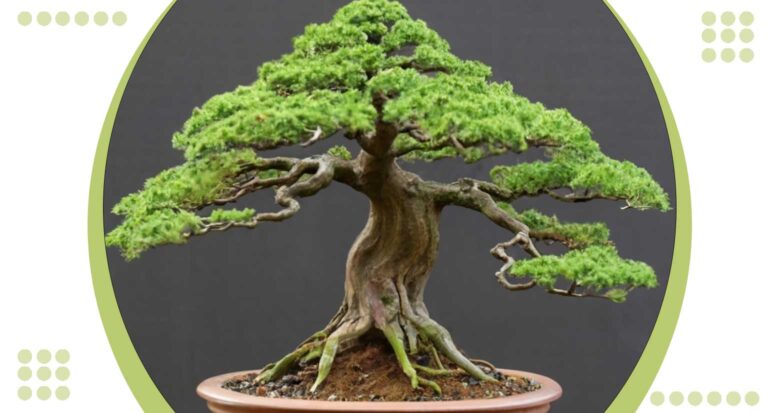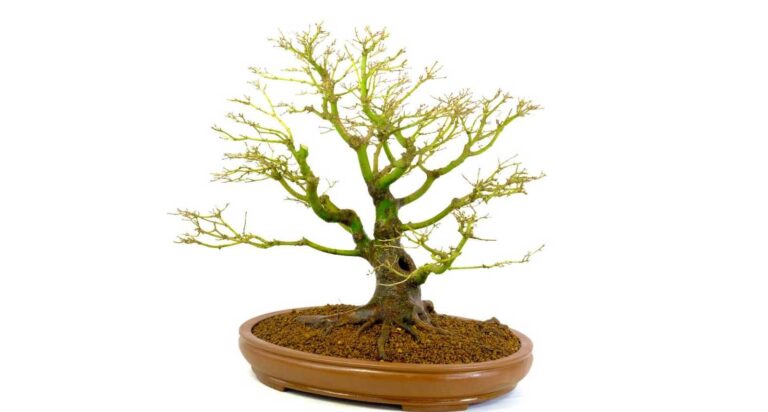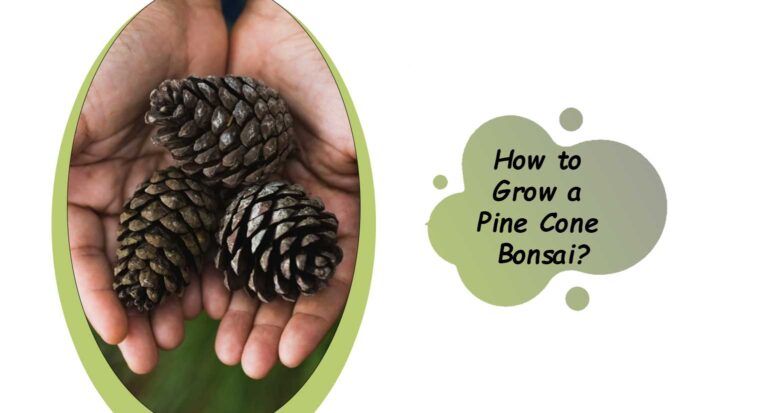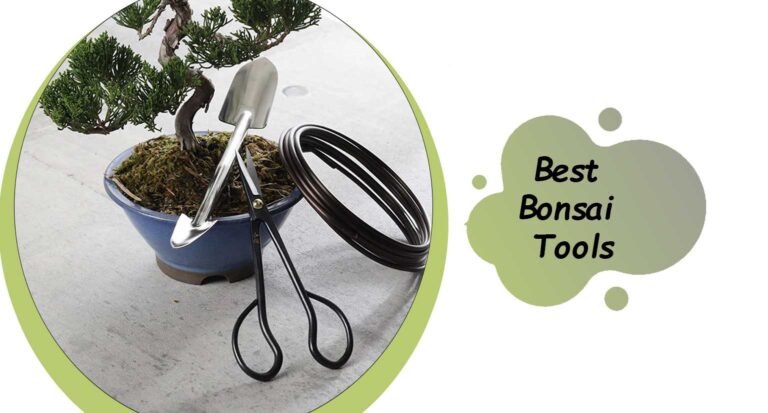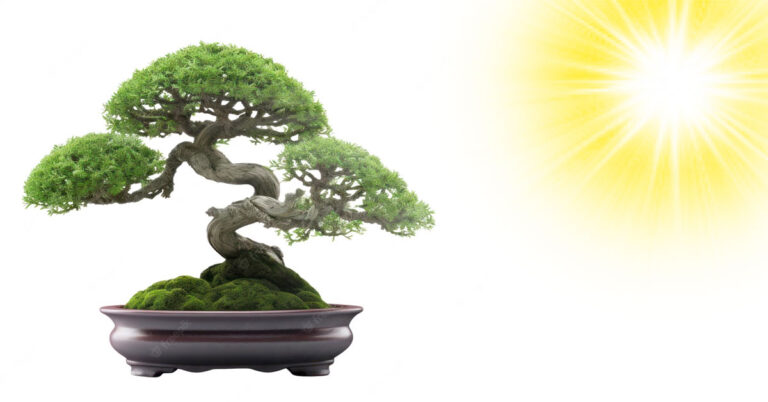How Long Can Bonsai Go Without Water?
Understanding the delicate balance between nurture and resilience is key. As enthusiasts embark on their journey of cultivating these miniature masterpieces, a common question lingers: How long can bonsai go without water?
Delve into this essential query as we unravel the mysteries behind the hydration needs of these captivating living sculptures.
Can I Leave My Bonsai for a Week?
In the captivating realm of bonsai ownership, the question of leaving these intricate miniature trees unattended for an entire week is a common concern.
The answer lies in a nuanced understanding of bonsai care, where factors such as species, environmental conditions, and prior care routines play pivotal roles.
Bonsai Water Needs
Each bonsai species has its unique water requirements. Some are more resilient and can endure short periods of drought, while others demand more consistent moisture.
Researching the specific needs of your bonsai’s species is paramount in determining its ability to thrive without water for an extended period.
Environmental Considerations
The local climate greatly influences how quickly bonsai soil dries out. In arid conditions, bonsai may require more frequent watering, whereas in humid environments, they can retain moisture for longer. Assessing your local climate aids in creating a tailored care plan for your bonsai’s well-being.
Prior Care Practices
The health and hydration of your bonsai leading up to your absence also play a crucial role. A well-hydrated bonsai with a robust root system is better equipped to endure periods without water.
Consistent and attentive care in the days preceding your departure can significantly impact your bonsai’s resilience.
Proactive Measures for Absence
For those planning to be away, adopting certain practices can mitigate the risks associated with leaving your bonsai unattended.
Techniques such as watering thoroughly before departure, placing the bonsai in a shaded area to reduce water loss through evaporation, and employing self-watering systems can help ensure your bonsai’s well-being during your absence.
Embark on this detailed exploration of bonsai care to empower yourself with the knowledge needed to make informed decisions about leaving your bonsai unattended for a week.
Strike the perfect balance between independence and attentive guardianship for your miniature arboreal companion.
How to Water Your Bonsai While on Vacation?
Embarking on a vacation shouldn’t mean compromising the health of your beloved bonsai. Here’s a detailed guide on how to water your bonsai efficiently, ensuring its well-being while you enjoy your time away.
Pre-Vacation Hydration
Begin your preparations by thoroughly watering your bonsai in the days leading up to your departure. A well-hydrated bonsai with moist soil is better equipped to endure periods without direct attention. This sets the stage for a more resilient plant in your absence.
Self-Watering Systems
Consider investing in self-watering systems specially designed for bonsai. These devices maintain consistent moisture levels by gradually releasing water into the soil.
Explore options such as drip irrigation or watering spikes, providing a reliable hydration source for your bonsai during your vacation.
Grouping Technique
If feasible, arrange your bonsai with other plants. This grouping technique creates a microenvironment with increased humidity, slowing down the rate of water evaporation. Just as in nature, plants together can create a more stable and supportive ecosystem.
Shaded Shelter
Position your bonsai in a shaded area to shield it from intense sunlight. This simple step minimizes water loss through evaporation and ensures that your bonsai retains moisture more effectively.
Trusted Caretaker
Enlist a trustworthy friend, neighbor, or family member to check in on your bonsai. Provide clear instructions on watering frequency and demonstrate any specific care routines. A human touch can be invaluable, ensuring personalized attention to your bonsai’s needs.
Mulching Magic
Apply a layer of organic mulch to the surface of the soil. Mulch acts as a protective barrier, reducing water evaporation and regulating soil temperature.
This natural method enhances the water-retaining capacity of the soil, contributing to your bonsai’s hydration during your absence.
With these detailed strategies, you can confidently embark on your vacation, knowing that your bonsai is in capable hands, even if they’re not your own.
Implementing these proactive measures ensures that your miniature arboreal companion continues to flourish while you indulge in some well-deserved relaxation.
Is Rain Beneficial for Your Prized Miniature Trees?
Rain, nature’s gift, plays a crucial role in the overall health and vitality of your cherished bonsai. Let’s delve into the detailed dynamics of how rainwater influences your miniature arboreal companions, examining both its potential benefits and considerations for optimal care.
The Pros of Rainwater for Bonsai
Natural Nutrient Boost
Rainwater is inherently rich in natural nutrients that benefit your bonsai. As raindrops absorb gases from the atmosphere, they carry essential elements such as nitrogen, promoting healthy foliage and overall growth.
Soil Aeration and Flushing
Rain helps aerate the soil by improving its structure. The force of raindrops can also aid in flushing out accumulated salts from the soil, preventing the risk of root burn and ensuring a conducive environment for root development.
Balanced pH Levels
Unlike tap water, which may have varying pH levels, rainwater tends to be more neutral. This stability in pH contributes to a more balanced and harmonious growth environment for your bonsai.
Considerations for Rain and Bonsai Care
Overwatering Risks
While rain is beneficial, excessive or prolonged periods of rainfall can lead to overwatering, posing a threat to the health of your bonsai. Adequate drainage and monitoring soil moisture become crucial during rainy seasons.
Fungal Concerns
Increased moisture from rain can create conditions favorable for fungal growth on bonsai leaves and soil. Regular inspections and preventive measures, such as proper spacing and well-ventilated placement, help mitigate these risks.
Protection from Intense Rainfall
For delicate or young bonsai, shielding them from heavy downpours prevents damage to branches and foliage.
Placing them under a covered area or utilizing protective structures ensures the benefits of rain without compromising the tree’s well-being.
Rain is indeed a blessing for bonsai, providing a natural source of nourishment and fostering a vibrant, thriving ecosystem.
Understanding how to harness the benefits while mitigating potential risks allows you to optimize the care of your miniature arboreal companions during rainy seasons.
Mastering Bonsai Hydration
Unlock the art of impeccable bonsai care by delving into the detailed intricacies of optimal watering. Elevate your understanding of the best practices, ensuring your cherished miniature trees receive the precise balance of moisture for sustained health and enduring beauty.
Water Quality Matters
Choose water with care, as the quality directly impacts your bonsai’s well-being. Whenever possible, opt for rainwater or filtered water to avoid mineral buildup that may harm the soil and roots over time.
The Importance of Soil Assessment
Understand your bonsai’s soil composition to tailor your watering routine. Well-draining soils prevent waterlogged conditions, promoting aeration and preventing root rot. Regularly assess the moisture levels by inserting a finger into the soil – a slightly moist feel is ideal.
Timing is Key
Embrace a mindful approach to watering by considering the time of day. Early mornings are optimal, allowing the bonsai to absorb moisture before the heat of the day. Evening watering should be avoided to prevent prolonged soil moisture, reducing the risk of fungal issues.
Watering Technique
Adopt a gentle and thorough watering technique. Use a watering can with a fine nozzle or a drip irrigation system to provide a controlled and even distribution of water. Direct the water towards the base of the tree, allowing it to permeate the soil gradually.
Frequency Tailored to Needs
Bonsai species, climate, and environmental conditions all influence watering frequency. Rather than adhering to a strict schedule, observe your bonsai’s response to environmental factors and adjust watering accordingly. This adaptive approach ensures personalized care for optimal growth.
Hydration, Not Saturation
Strive for hydration without saturation. Overwatering is a common pitfall that can lead to root rot. Ensure that excess water can freely drain from the pot, preventing waterlogged conditions that compromise root health.
Consideration for Seasonal Variations
Acknowledge the impact of seasons on watering needs. Bonsai typically requires more water during the active growing season and less during dormancy. Adjust your watering routine to align with the natural cycles of your bonsai.
Embrace the art of optimal watering as an essential component of bonsai mastery. By incorporating these detailed practices into your care routine, you not only nurture the physical health of your miniature arboreal companions but also cultivate a deeper connection with the artistry of bonsai cultivation.
A Watering Wisdom Conclusion
As we conclude this exploration into the art of watering bonsai, it’s evident that the key to nurturing these miniature arboreal wonders lies in a delicate balance.
Understanding the unique needs of your bonsai, from the intricacies of soil composition to the artful dance of timing and technique, empowers you to be a guardian of its vitality.
By embracing the nuances of optimal hydration, you not only ensure the physical health of your bonsai but also forge a deeper connection with the living artistry that unfolds in each delicate leaf and branch.


